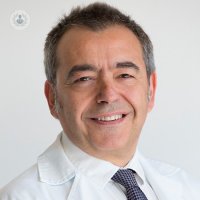Assisted Reproduction Methods
Written by:¿Why we can not conceive a child
?
Well, basically in recent years we are seeing, especially in Western society, there is difficulty conceiving. Several factors influence this. The first is fundamental today is that much delayed motherhood, every time we decided for professional reasons or otherwise delay childbearing, and that makes natural reproduction is more difficult.
When a couple decides to get pregnant and decide to get pregnant through sexual intercourse, after a certain period of time, you see that there are difficulties, and the fact is that if in six or twelve months, depending on the circumstances, it has not achieved a pregnancy, the probability of pregnancy via natural descends gradually, and is therefore at the time, when worn in that period of time, when we recommend performing at least one evaluation of the couple.
The male factor tells us where we go, and the female factor gives the forecast, we have a very poor quality semen, forcing us to go to a particular procedure, but the brand never forecast semen once this in an assisted reproduction, but it marks the female factor and primarily on the female factor, the two most important parameters are the age of the woman to more old more difficulty, as in the natural reproduction;and ovarian reserve, this is the ability of these ovaries to respond to stimulation, go to a treatment or another.
¿What methods of assisted reproduction
?
Inseminations, which is the simplest treatment consists basically stimulate ovulation in women and at one point introducing conjugal semen into the uterus of the woman.
The in vitro fertilization is the process in Spain but is done more often, it is the procedure that involves, basically, as the name suggests, after stimulation of the ovaries of women, remove the eggs and fertilize these oocytes in vitro, ie, in the laboratory fertilize. There are several methods to fertilize, either by direct insemination, ie leaving the gametes to fertilize that each laboratory;or by micro-injection, that is, the introduction of sperm into each oocyte.
From certain ages propose the use of donor oocytes because it is the procedure that has more exist. And sometimes the use of donor sperm is proposed because either the male has no sperm at all, or it is a gay couple, we talk about woman, or is a woman alone, in which need the use of donor sperm.
¿What are the chances of pregnancy
?
The rates depend mainly on the age of the woman, more age, the percentages are lower. In general, in vitro fertilization and a mean age of 36– 37 years, the chances of pregnancy with child at home, per attempt are 40– 42 %.
¿What risks exist
?
The problems that have assisted fertilization is that by transferring more than one embryo into a uterus of a woman, these can be implemented and fertilization have a higher multiple pregnancy, to get an idea, the chances of multiple pregnancy by natural reproduction are 2%. If you stick to the methods of assisted reproduction, approximating 20– 24% of pregnancies, one in five are multiple. And inevitably have a multiple pregnancy, a number of complications, we should try to avoid.
The other side effect we called ovarian hyperstimulation syndrome. In assisted reproduction procedures, we controllably hiperestimulamos ovaries, what happens is that sometimes this gets out of controlled hyperstimulation: this is that the ovaries respond excessively
.
¿Children born by these techniques are like other children
?
Children born after assisted reproduction procedures have equal chances of children born after complications Natural reproduction.




